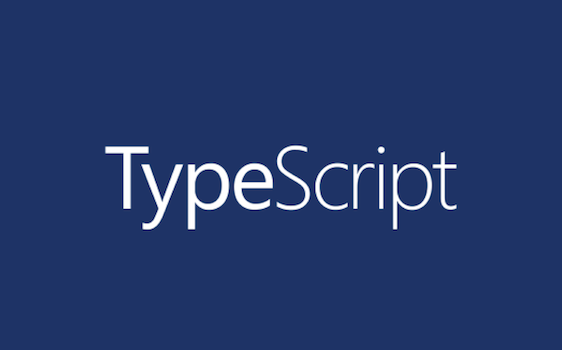- 11 Posts
- 140 Comments

 8·1 month ago
8·1 month agoSee I think that’s not what the “anti-woke” people think it means.
That’s exactly what I pointed out. The people who provide them their information are actively trying to poison the word to the point that it means something else. But it doesn’t, because the poisoning only works in the echo chambers that spread that information.
Turning to urban dictionary, they’re using this definition: […]
That would be one of the attempts to poison the word. It’s worth pointing out that anyone can add a definition to urban dictionary and it’s quite often that trolls try to overwhelm existing definitions on there.
[…] (according to that definition).
That comes back to what I said before. People who self report as anti-woke are against anything that uses the label “woke”, until they look at what’s under the label and they realise they aren’t against any of the points the “woke” labelled thing is doing.
They’re not actually anti-woke, they’re anti-incorrect-label.

 142·1 month ago
142·1 month agoBecause being woke is generally considered to be a bad thing?
No. Being woke is only considered bad in toxic echo chambers where they’ve tried to poison the word.
Most people who self report as “anti-woke” repeat infectious and carefully crafted but fallacious talking points whenever the term “woke” is said.
But if you bring up a situation where a minority is getting the bad end of the stick and they agree with you that it’s bad, they don’t realise that they themselves are being woke. They agree with being woke so long as the label “woke” isn’t used. It’s when you point that out that they start to realise that they’ve been poisoned against the term.
Being woke simply means that some people don’t often get the same affordances as others.
If you accept the general fact that women tend to get paid less for the same amount of work, then you’re woke.
If you accept the general fact that black people might not get hired if a person doing the hiring is racist, then you’re woke.
If you accept the general fact that some people have to hide the fact that they’re not heterosexual in some countries otherwise they’ll suffer the death penalty, then you’re woke.

 6·1 month ago
6·1 month agoEnglish doesn’t really have a well defined way to write down the “zjush” from the “su” in pleasure.
The most accepted ways are “zh” or “x” in English, or
ʒin IPA.Since most people call it twitter, and Elon want to call it x, so people push them together to make xitter, because it sounds like “shitter” (the crude term for toilet) and because the quality of twitter has declined dramatically to the point that it resembles an unclean toilet.

 3·2 months ago
3·2 months agoWatching web developers react to this change on mastodon has been… interesting to say the least
This doesn’t seem overly useful.
It’s a list taken out of a bunch of books with no regard for how something can be the best path in one language and a smell in another language.
Look at this page for example: https://luzkan.github.io/smells/imperative-loops
It suggests using functional loop methods (
.map(),.reduce(),.filter()) instead of using imperative loops (for,for in,for each) but completely disregards the facts that imperative loops also have access to thebreak,continue, andreturnkeywords to improve performance.For example: If I have an unsorted list of 1000 cars which includes a whole bunch of information per car (e.g. color, year manufactured, etc…), and I want to know if there were any cars were manufactured before the year 1980, I can run an imperative loop through the list and early return true if I find one, and only returning false if I haven’t found one by the end of the list.
If the third car was made in 1977, then I have only iterated through 3 cars to find my answer.
But if I were to try this with only functional loops, I would have to iterate through all 1000 cars before I had my answer.
A website with blind rules like this is going to lead to worse code.

 3·2 months ago
3·2 months agoQOI is just a format that’s easy for a programmer to get their head around.
It’s not designed for everyday use and hardware optimization like jpeg-xl is.
You’re most likely to see QOI in homebrewed game engines.

 12·2 months ago
12·2 months agoAre you not made primarily of water?

 31·2 months ago
31·2 months agoThe syntax is only difficult to read in their example.
I fixed their example here: https://programming.dev/comment/12087783

 6·2 months ago
6·2 months agoI fixed it for you (markdown tables support padding to make them easy to read):
markdown table x y |markdown|table| |--------|-----| |x |y |

 2·2 months ago
2·2 months agoChromium had it behind a flag for a while, but if there were security or serious enough performance concerns then it would make sense to remove it and wait for the jpeg-xl encoder/decoder situation to change.
It baffles me that someone large enough hasn’t gone out of their way to make a decoder for chromium.
The video streaming services have done a lot of work to switch users to better formats to reduce their own costs.
If a CDN doesn’t add it to chromium within the next 3 years, I’ll be seriously questioning their judgement.

 13·2 months ago
13·2 months agoI’m under the impression that there’s two reasons we don’t have it in chromium yet:
- Google initially ignored jpeg-xl but then everyone jumped on it and now they feel they have to create a post-hoc justification for not supporting it earlier which is tricky and now they have a sunk cost situation to keep ignoring it
- Google today was burnt by the webp vulnerability which happened because there was only one decoder library and now they’re waiting for more jpeg-xl libraries which have optimizations (which rules out reference implementations), good support (which rules out libraries by single authors), have proven battle-hardening (which will only happen over time) and are written safely to avoid another webp style vulnerability.
Google already wrote the wuffs language which is specifically designed to handle formats in a fast and safe way but it looks like it only has one dedicated maintainer which means it’s still stuck on a bus factor of 1.
Honestly, Google or Microsoft should just make a team to work on a jpg-xl library in wuffs while adobe should make a team to work on a jpg-xl library in rust/zig.
That way everyone will be happy, we will have two solid implementations, and they’ll both be made focussing on their own features/extensions first so we’ll all have a choice among libraries for different needs (e.g. browser lib focusing on fast decode, creative suite lib for optimised encode).
You should put this in codepen so people don’t need to clone a repo to see it.
For example, here’s a 3d css-only thing I was fiddling with: https://codepen.io/spartanatreyu/pen/yPyNjw?editors=0100

 3·3 months ago
3·3 months agoYou keep saying “relevance”, and now other things like “gimmick” and “marketing”.
Why are you so focused on “relevance”?
They’re completely unrelated to Deno.
Node had problems, ts-node had problems, Deno fixes those problems for developers.
Separately, Bun trades solving some problems for solving other problems.
Developers are free to choose between runtimes based on what problems they encounter.
Personally I use node for existing web projects and deno for data processing and to compile scripts into redistributable binaries.

 3·3 months ago
3·3 months agostdlib.io is a data process/vis library, not a standard library.
jQuery was a DOM/Utility DX library (and also a compatibility layer before all browsers finally focussed on standards), not a standard library.
Deno people are trying so fucking hard to be relevant. It’s embarrassing. Bringing nothing to the table has been their MO from day 1.
Let’s examine that.
Deno has always been:
(parapharing) “Hi, I’m the creator of Node and want to make it better but can’t get everyone on board with the changes. So I’m going to create a new JS runtime. Node will need to implement these improvements to keep up or everyone will switch away from node. Either way, developers win.”
We know it’s been that way since he was a month into Deno’s development in his famous talk: 10 Things I Regret About Node.js
Deno […] Bringing nothing to the table […]
Have a look through each of those 10 points he brought up, then compare that to node before, and node now. It’s pretty clear he gave them the swift kick in the ass to start making those changes. We win. That’s clearly a success.

 61·3 months ago
61·3 months agoWhat standard library?
JS has only had package/library hell

 5·3 months ago
5·3 months agoWho is this article for?
Firstly, it’s basically just a repost of existing info from the mozilla article but now with ads.
Secondly, the puppeteer team left years ago to work on playwright which is now the better product, which also supports firefox through the webdriver-bidi standard…
So now I’m wondering… just who was this article for?

 2·4 months ago
2·4 months agoI use
git log --graph --all --remotes --onelinewhenever I need to shell into another computer, but it’s still too barebones for regular use.

 2·4 months ago
2·4 months agoWhat specifically do you think is legacy in that comparison? The coloring? The horizontal layout? The whitespace?
Note: I’ve changed the first link from https://github.com/cxli233/FriendsDontLetFriends/network to https://github.com/zed-industries/zed/network. Still the same view, but just a different repo to highlight the problems
- It’s in a small non-responsive box
- Ridiculous spacing
- If you want to see the commit messages, you either need to hover over a dot which increases visual scanning durations or you need to go to the commits view which only shows the commits on a single branch
- It doesn’t show commit messages
- It’s scrolling horizontally
- Branches cannot be collapsed
- Branches cannot be hidden/ignored
- No way to search for commits
- No way to select multiple commits
- Which also means no way to diff any specific commits together
- And there’s also no way to perform an action over a range of commits
- And there’s also no way to start a merge/merge-request/pull-request/etc… between two commits
- No way to sort by date/topologically
- Keyboard controls only moves view instead of selecting commits
I’ll stop here at 10 reasons (or more if you count the dot points), otherwise I’ll be here all day.
The network view lays out forks and their branches, not only [local]/[local+1-remote] branches.
Yes, but the others can do that while still being usable.
I don’t know what IDE that miro screenshot is from. […]
It’s gitkraken
[…] But I see it as wasteful and confusing. The author initials are useless and wasteful, picking away focus. The branch labels are far off from the branch heads. […]
The picture doesn’t do it justice, it’s not a picture, it’s an interactive view.
You can resize things, show/hide columns, filter values in columns to only show commits with certain info (e.g. Ignore all dependabot commits), etc… Here’s an example video.
[…]The coloring seems confusing.
You can customise all that if you want.






I think the more important question here is why are you using the internet without an adblocker?
But to answer the lesser question, stick this in a pinned tab and download what you need: https://devdocs.io/offline